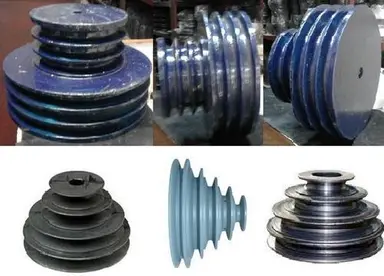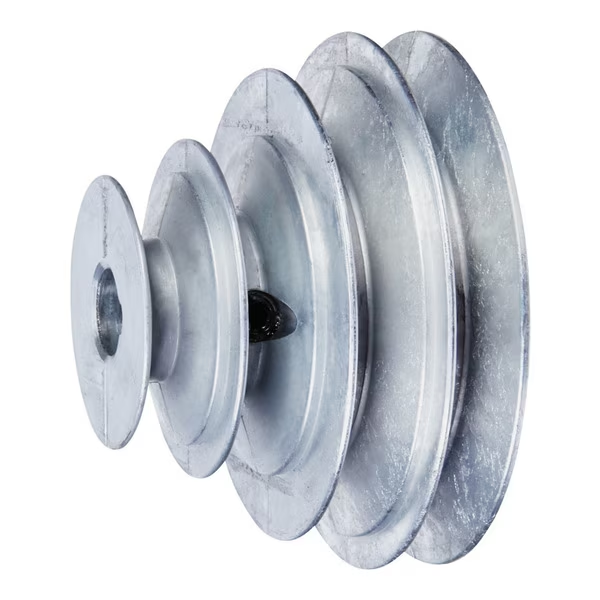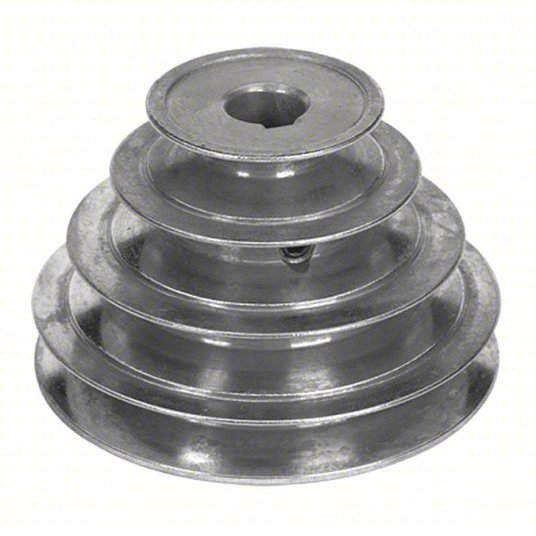Product Description
Products Type
We can custom shape,size,color material and quantity for plastic pulley as your requirment.
Products Specification
1. Various hardness for your choice.
2. Good abrasion, heat and oil resistance.
3. Good anti-aging performance and gas tightness.
4. Ease of bonding to other material.
5. Excellent oxygen and CHINAMFG resistance.
6. Non-flammable,self-extinguish.
| Material | PA,PA6,PA66,PP,PE,LDPE,HDPE,UWHDPE,PTFE,POM,ABS,or Custom Compound (Any custom compound plastic is available) |
| Size | According to samples or drawings |
| Color | Black,white,red,green,transparent or any color according to Pantone colors |
| Finish | High Gloss,Fine Grain,Electroplating,Painting,Printing,Texture etc,or as request |
| Type | Round,square,rectangular,or any nonstandard shape as request |
| Logo | Debossed,embossed,printed logo or as request |
Plastic Material Properties
Our Factory
Customization Capabilities
/* January 22, 2571 19:08:37 */!function(){function s(e,r){var a,o={};try{e&&e.split(“,”).forEach(function(e,t){e&&(a=e.match(/(.*?):(.*)$/))&&1
| Pulley Sizes: | Type D |
|---|---|
| Manufacturing Process: | Casting |
| Material: | Customized |
| Samples: |
US$ 999/Piece
1 Piece(Min.Order) | Order Sample For sample price, package information, and logisti
|
|---|
| Customization: |
Available
| Customized Request |
|---|
.shipping-cost-tm .tm-status-off{background: none;padding:0;color: #1470cc}
|
Shipping Cost:
Estimated freight per unit. |
about shipping cost and estimated delivery time. |
|---|
| Payment Method: |
|
|---|---|
|
Initial Payment Full Payment |
| Currency: | US$ |
|---|
| Return&refunds: | You can apply for a refund up to 30 days after receipt of the products. |
|---|

What role do step pulleys play in achieving variable speed control in machinery?
Step pulleys play a crucial role in achieving variable speed control in machinery. Here’s how they contribute to this capability:
1. Speed Variation:
Step pulleys provide multiple steps or levels of different diameters. By changing the position of the belt or chain from one step to another, the effective diameter of the pulley is altered. This variation in diameter results in different speed ratios between the driving pulley and the driven pulley. By selecting different steps, the rotational speed of the driven component can be adjusted, allowing for variable speed control.
2. Manual Adjustment:
Step pulleys enable manual adjustment of the speed. Operators can easily and quickly change the speed by shifting the belt or chain to a different step on the pulley. This manual adjustment feature provides simplicity and convenience in achieving the desired speed for different tasks or operating conditions.
3. Speed Range:
The arrangement of steps on the pulley determines the available speed range. Step pulleys can be designed with a range of steps, each corresponding to a specific speed ratio. This allows for a wide range of speed options, making them suitable for applications that require variable speeds.
4. Incremental Speed Control:
Step pulleys offer incremental speed control. Each step on the pulley corresponds to a specific speed ratio, allowing for precise speed adjustments. Operators can select the step that provides the desired speed increment for the specific task at hand. This incremental control is particularly useful when fine-tuning the speed for optimal performance.
5. Adaptability:
Step pulleys are adaptable to different power transmission systems. They can be easily integrated into various machinery setups, allowing for variable speed control in a wide range of applications. Whether it’s in industrial machinery, woodworking equipment, or even domestic appliances, step pulleys provide a versatile solution for achieving variable speed control.
6. Energy Efficiency:
Variable speed control offered by step pulleys contributes to energy efficiency. By adjusting the speed to match the requirements of the task, unnecessary power consumption can be avoided. This energy-saving feature is beneficial in terms of reducing operating costs and promoting sustainability.
Overall, step pulleys are essential components for achieving variable speed control in machinery. Their ability to vary speed through manual adjustment and their adaptability to different systems make them a reliable and effective solution for applications that require flexible speed control.

What safety considerations should be kept in mind when working with step pulleys?
Working with step pulleys involves certain safety considerations to prevent accidents and ensure the well-being of individuals involved. Here are some important safety guidelines to keep in mind:
1. Read and Follow Manufacturer’s Instructions:
Before operating any machinery or equipment with step pulleys, carefully read and understand the manufacturer’s instructions, warnings, and safety guidelines. Follow them strictly to ensure safe usage.
2. Wear Personal Protective Equipment (PPE):
Always wear appropriate personal protective equipment, such as safety glasses, gloves, and hearing protection, when working with step pulleys. PPE helps protect against potential hazards, including flying debris, entanglement, and noise.
3. Machine Guarding:
Ensure that all necessary machine guards and safety shields are in place and properly functioning. Machine guards help prevent accidental contact with moving parts, including step pulleys, reducing the risk of injury.
4. Lockout/Tagout Procedures:
Follow lockout/tagout procedures when performing maintenance or repair tasks on machinery with step pulleys. Lockout/tagout involves isolating the equipment from its power source and securing it to prevent accidental startup during maintenance activities.
5. Proper Training and Supervision:
Ensure that operators and maintenance personnel receive proper training on the safe operation and maintenance of machinery with step pulleys. Supervise their work initially until they have gained sufficient experience and competence.
6. Avoid Loose Clothing and Jewelry:
Avoid wearing loose clothing, jewelry, or anything that could get entangled in the moving parts of the machinery, including step pulleys. Loose items can pose a serious risk of entanglement and injury.
7. Use Proper Tools and Equipment:
Use the appropriate tools and equipment when working with step pulleys. Using improper tools or makeshift solutions can lead to accidents or damage to the equipment.
8. Regular Maintenance and Inspection:
Perform regular maintenance and inspection of the machinery and step pulley system. Check for any signs of wear, damage, or misalignment. Address any issues promptly to ensure safe and efficient operation.
9. Report and Address Safety Concerns:
If you notice any safety concerns or potential hazards related to the step pulley system, promptly report them to the appropriate personnel. Take necessary actions to address the concerns and ensure a safe working environment.
10. Follow Safe Work Practices:
Adhere to safe work practices, such as keeping the work area clean and organized, maintaining proper lighting, and avoiding distractions. These practices contribute to a safer work environment when working with step pulleys.
By following these safety considerations and guidelines, you can minimize the risks associated with working with step pulleys and create a safer working environment for yourself and others.

What types of belts or cables are typically employed with step pulleys?
Step pulleys are commonly used with specific types of belts or cables that are suitable for power transmission and engagement with the pulley’s steps. Here are some typical belt and cable options employed with step pulleys:
1. V-Belts:
V-belts are one of the most widely used types of belts with step pulleys. They have a trapezoidal cross-section and are designed to fit into the V-shaped grooves on the steps of the pulley. V-belts offer good power transmission capabilities and are known for their high frictional grip.
2. Flat Belts:
Flat belts, as the name suggests, have a flat cross-section. They are often made of materials like rubber, nylon, or leather. Flat belts are suitable for step pulleys that have wider and flatter steps. They provide reliable power transmission but may have lower grip compared to V-belts.
3. Synchronous Belts:
Synchronous belts, also known as timing belts, have teeth on the inner surface. They are designed to engage with matching teeth on the steps of the pulley. Synchronous belts offer precise power transmission and are commonly used in applications where accurate timing and synchronization are required.
4. Chain and Sprocket:
In some cases, step pulleys may be employed with chains and sprockets instead of belts. Chains with matching pitch and sprockets with corresponding teeth engage with the pulley steps, providing durable and efficient power transmission. Chain and sprocket setups are often used in heavy-duty applications.
5. Cable and Sheave:
For certain applications, such as in elevators or cranes, step pulleys may be used with cables and sheaves. The cable is wound around the sheave on the pulley, allowing for smooth and controlled movement.
The choice of belt or cable depends on factors such as the specific application, power requirements, speed range, and environmental conditions. It’s important to select the appropriate belt or cable that can effectively engage with the steps of the step pulley and provide reliable power transmission.


editor by CX
2024-04-25
